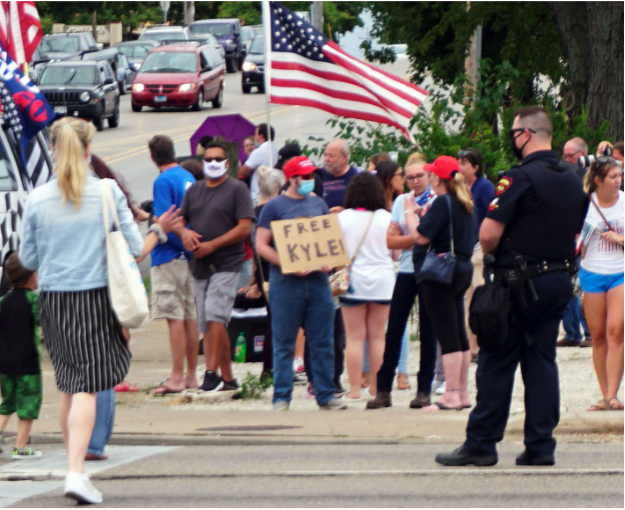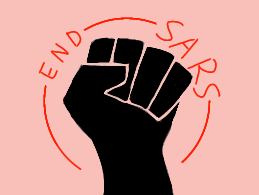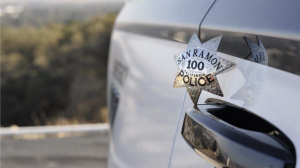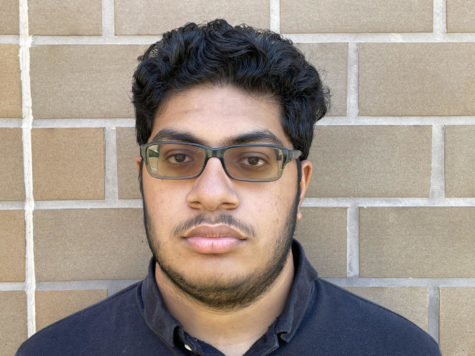Breaking down the case of Kyle Rittenhouse
Free use via creative commons
A supporter of Rittenhouse proclaims his stance on one of the most highly politicized court cases of this year.
February 7, 2022
On Aug. 25, 2020, a 17-year-old named Kyle Rittenhouse fatally shot two men and wounded another at a riot in Kenosha, Wisconsin. Now, a year later with the trial stretching from Nov. 1 to Nov. 19, he has been acquitted of all charges, a verdict that has been met with greatly polarized responses stretching from outrage to celebration. In the midst of the controversy, one question remains for the average bystander: what actually happened?
Background
This specific riot was part of a wave of unrest following the shooting of Jacob Blake, a 29-year-old black man who was injured by a white police officer, paralyzing from the waist down. The details of the event are nebulous, with Blake’s lawyer claiming that Blake was trying to break up an argument between two women, while the Kenosha police union saying that Blake attempted to resist arrest. This only added fuel to the fire of the resurgence of the Black Lives Matter (BLM) protests that were happening around the summer of 2020.
Before this protest, Kyle Rittenhouse had purchased an AR-15 style rifle (specifically, a Smith & Wesson M&P15) through an associate of his, Dominick Black, using money from an unemployment check. This rifle was deemed as not illegal for Rittenhouse to carry, as its barrel was measured as longer than 16 inches, meeting the parameters of a Wisconsin law stating that minors were allowed to carry rifles with barrels more than 16 inches.
“I cannot legally possess or carry a pistol because I’m not 18 in Wisconsin. I believe it’s 18 in Wisconsin for a pistol. But with the rifle, I knew I could possess that rifle. I knew I couldn’t buy it, but I knew I could take it to the shooting range or possess it,” Rittenhouse said in his testimony.
It is important to note that Rittenhouse at this point was known to have a favorable opinion of the police. He had expressed support for the Blue Lives Matter movement earlier, and he was a part of the Police Explorer program for the Grayslake Police department.
Rittenhouse came to Kenosha for work purposes on Aug 24. While at Kenosha, he visited Black’s stepfather’s house. Around that time, he witnessed on social media the riots nearby. On the morning of the 25th, Rittenhouse and a few friends (Dominick Black, Mackenzie Rittenhouse, and Ray Dickhart) went into downtown Kenosha. He spent the day doing various activities such as cleaning up graffiti from Reuther Central High School and visiting a local car dealership known as Car Source, which he had seen being burnt down on social media earlier.
Later in the day, RIttenhouse, Dominick Black, and an associate of the two named Nick Smith drove to another Car Source location in order to protect it from being vandalized, as well as to provide medical aid to protestors. Several others were present as well. There is conflicting information on whether or not the owners of Car Source actually allowed for them to be there.
“Sahil [one of the owners], who posed for a picture outside the Car Source with Rittenhouse and a group of heavily armed civilians, testified that he hadn’t actually known any of the men at the time. He requested a photo because he was ‘so impressed’ by the way the men were dressed, and had previously only seen armed men like that on television,” according to Insider.
The Shooting
On the evening of Aug 25th, Rittenhouse had a confrontation with Joseph Rosenbaum, one of the victims.
“The first time was me and Ryan Balch were a little bit north towards the north corner of 59th and Sheridan, and Mr. Rosenbaum was walking with a steel chain and he had a blue mask around his face, and he was just mad about something,” Rittenhouse recalled. “Me and Mr. Balch were asking people if they needed medical help. Then he screamed —sorry for my language— he screamed, ‘If I catch any of you f****** alone, I’m going to f******* kill you.’’
At the time, Rittenhouse was providing medical aid to nearby people, and had gotten interviewed by Richard Mcginiss, a video producer for the Daily Caller publication. In that interview, he invited Mcginnis to follow him, and lied about having experience as an EMT.
Rosenbaum later followed Rittenhouse into the parking lot of Car Source along with a group of rioters. Video evidence shows that Rosenbaum threw a bag of socks, deodorant and underwear at Rittenhouse, and then tried to take away Rittenhouse’s rifle. Rittenhouse fired four rounds, severely injuring Rosenbaum. Mcginnis, who was at the scene of the crime, took Rosenbaum to the hospital, where he died of his wounds.
“I believe that when I was talking to him in the vehicle … I like to think that he could hear me. It seemed that his eye was looking at me,” Mcginnis said, referring to Rosenbaum.
He then left the parking lot and headed north up the road, pursued by several people. One of them, Anthony Huber, hit Rittenhouse with a skateboard. Rittenhouse stumbled and fell, at which point someone tried to kick him. Rittenhouse fired two shots at the unknown individual, both of them missing. Meanwhile, Huber tried to grab the gun, but Rittenhouse fired once, killing him instantly.
“If I didn’t pull that trigger, I thought Mr. Huber was going to kill me,” Rittenhouse said.
Gabe Grosskreutz, a man on scene who was recording the protest, drew his handgun and approached Rittenhouse, who proceeded to shoot him in the arm.
Rittenhouse then went home to Antioch, Illinois, and an hour after the event, he turned himself into the police of his hometown.
Trial
Rittenhouse was charged with the following, as per Wisconsin State Law:
- First degree reckless homicide with the use of a dangerous weapon, via the death of Joseph Rosenbaum
- First-degree recklessly endangering safety. A witness on the scene, Richie McGinniss was present at Rosenbaum’s death, and was in the line of fire of Rittenhouse’s rifle.
- Another first-degree recklessly endangering safety. At the scene of Anthony Huber’s death, one of the nearby protestors attempted to kick Rittenhouse, who then fired two shots at the man, both of which missed.
- First-degree intentional homicide with the use of a dangerous weapon; the death of Anthony Huber.
- Attempted first-degree intentional homicide, via the shooting of Gaige Grosskreutz.
- Possession of a dangerous weapon by a person under 18. Rittenhouse was 17 at the time of the shootings. This charge was thrown out before the closing arguments of each side.
- Failure to Comply with an Emergency Order from State or Government: Kenosha had an 8pm curfew set in place, which came with a 200 dollar fine for violating.
It is important to note the difference between reckless homicide and intentional hFomicide: Intentional meaning that you sought to murder someone, and reckless meaning that you weren’t planning to kill someone, but you didn’t hesitate. To quote the specific Wisconsin Statute 940.02, “Whoever recklessly causes the death of another human being under circumstances which show utter disregard for human life is guilty of a Class B felony.”
Rittenhouse was cleared of all of these over the course of the trial. A major contention point between both sides was, “Was this truly self-defense?”. The prosecution tried to frame their arguments that Rittenhouse came to Kenosha simply because there was violence. However, the defense argued that Rittenhouse feared for his life, which is why he shot.
Consequences & Conclusions
This case was a polarizing one, specifically politically. The verdict was seen as a great triumph for gun rights advocates including the NRA, who awarded Rittenhouse with an AR-15 for “being a warrior for gun owners and self defense rights across the country”. Many prominent conservative figures also supported Rittenhouse throughout the case, turning him into a hero figure. He’s even been offered Congressional internships and met with former president Donald Trump.
Meanwhile, on the left side, he’s seen as a herald of a dangerous future. Left-wing students of Rittenhouse’s college, Arizona State University (ASU) are demanding him to be ousted from campus. Gun control advocates are using this case as an example of why control works.
To put it in simple words, this case is a microcosm of the growing political tensions and differences.
As for Rittenhouse himself? He seems to want to distance himself from the case. On the conservative podcast, “You Are Here”, he said, “If I could go back, I wish I would never have had to take somebody’s life.”
Furthermore, on the “Charlie Kirk Show”, Rittenhouse said that he was destroying the gun involved in the event.
“We don’t want anything to do with that [the rifle],” Rittenhouse stated.
Nevertheless, this case will long be remembered in the collective conscious of the American people, and proves as a highlight of the growing radicalization of politics.





